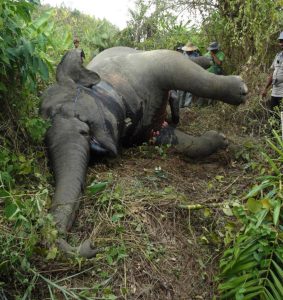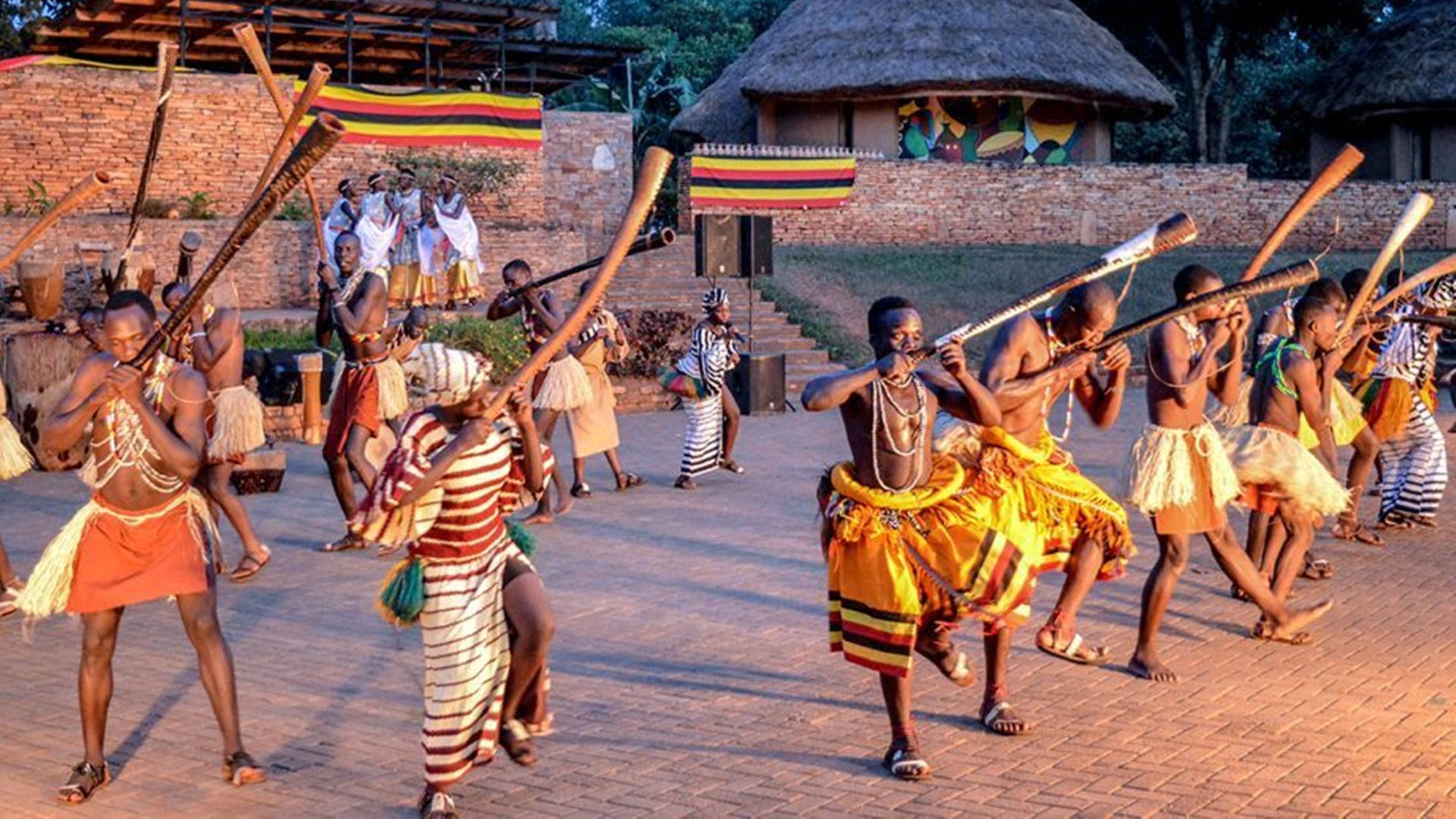The Elephant

This is the largest mammal on land
There are three types of elephants, African bush, African forest and Asian
There over 5000 elephants in Uganda.
Elephants have a long trunk, floppy ears, and wide thick legs
Elephants weigh up to 600kg or more
African elephants go up to 3.2m
Asian elephants go up to 2.8m
They can move up to 40km/hour
Elephants take 80% out their time feeding (16 to 18 hours)
They can eat 300 to 400kg of plant every day

They drink 110 to 190 liters of water per day
An elephant can poo about 100kg of dung every day
A group of elephants is called a herd
A young elephant is called a calf
Cow and bull are to female and male elephants respectively
An elephants lives to 60, 70 or more years
The male elephants leave their natal units at the age of 12 to 15 years
The males at this age leave their natal herd to live either singly or in small herds with other males
Adult males live a solitary life although they sometimes make small groups
During rutting season, bulls produce a lot of musth, a hormone that makes more sexually attractive and aggressive.
Rutting happens during the periods of high rainfall, females come on heat in the second half of the rainy season.
A female can be sexually mature (conceive for the first time) at the age of 10 to 12 years
Their gestation period is between 18 to 22months
As giving birth approaches, the pregnant elephant makes contact with another female in the same family unit for protection during labor
At giving birth, a female calf weighs up to 100kg and a male 120kg 0r more
Elephants produce 1 calf though sometimes can produce twins but rare cases
A calf stands up to walk 20 minutes after birth
An elephant can give birth every after 4 years
It produces 4 to five times in a life time
They communicate through vibration
Elephants are usually peaceful animals
They may be aggressive when having calves, harassed, injured or sick
They rumble to won the herd about danger
The herd makes a tight clump with the babies in the middle then move slowly facing the same direction
Elephants rarely fight but sometimes clash over females and dominance
The oldest and largest female elephant is called matriarch, this is the glue of the elephants family and responsible for the defense and looking out for each member in the herd and if she died, it could lead to dissolution of the herd

Elephants are commonly killed by humans, lions, crocodiles, tigers; hyenas;
Wild dogs, rhinos, sickness, injuries after hem selves fighting
A young elephant can be taken down by a strong lion or 6 lioness
When an elephant dies, others behave in a mourning manner
The female elephant will make loud trumpets in the presence of a dying calf
Elephants are distressed with encounter with a dead or dying member.
Elephants don’t have time because they have to feed most time to raise the required nutrients for their diet, and do not pay much attention to remains of other dead animals but when moving and meet a dead elephant, they will all stop, surround the cops, try to lift its tusks with their trunks, cautiously and gently touch its body, try to lift up its stiffened ears, the front legs and they will do this even if the dead does not belong to that particular family.
They will continue to visit the copse site even days after the first encounter.
The closest relatives like the orphans will seem to leave the site last and will make frequent visits the following days and weeks.
Sometimes some elephants will try to cover the copse with soil and vegetation.

When a matriarch dies,or any other elephant, most elephants that recognize her copse will try to pay respect to her and will even gather the tusks, skull, jaws scattered by predators and return them to its death site
Elephants have a significant role in the ecosystem
They make pathways in dense forested habitats that allow passage of other animals.
An elephant foot print can also enable a micro-ecosystem that when filled with water after rains, can provide home for tadpoles and other organisms.
Being grazers they control the amount of grass in turn reduce the risk of wild fires.
In the woodlands, they also control the d tree densities and their too much feeding
On them allows existence of other plant species and animal existence
Their huge dung provides significant fertility to the soil and allows seed dispersal encouraging multiplication of different plant species such as balanitis aegyptiaca, and borassus palms.
Elephants generate income to the country through tourism, employment opportunities, encourage infrastructure development like hotels, and so much more
They are facing a problem of habitat loss due encroachment of their home by humans in search for agricultural and settlement land caused by the increasing human population which pressures human to evade wildlife land.
illegal ivory trade( sometimes called the white gold of jihad) the encourages their poaching, wild trafficking, which benefits a few individuals involved in the trade and leading to their extinction, they are also killed by people living near their habitats after they cross to their gardens as retaliation for their destroyed crops
Therefor much efforts need to fight poaching of elephant and wildlife conservation awareness
Location of elephants in Uganda
Queen Elizabeth national park 2913 elephants
Murchison falls national park 1330 elephants
Kibaale national park 487 elephants
Kidepo valley national park 407 elephants
By kennedy migadde blick















2 Comments
Kasiita muliro
September 13, 2022 at 5:03 amThis is very good research
webstar
May 27, 2023 at 12:02 amthanks for appreciating